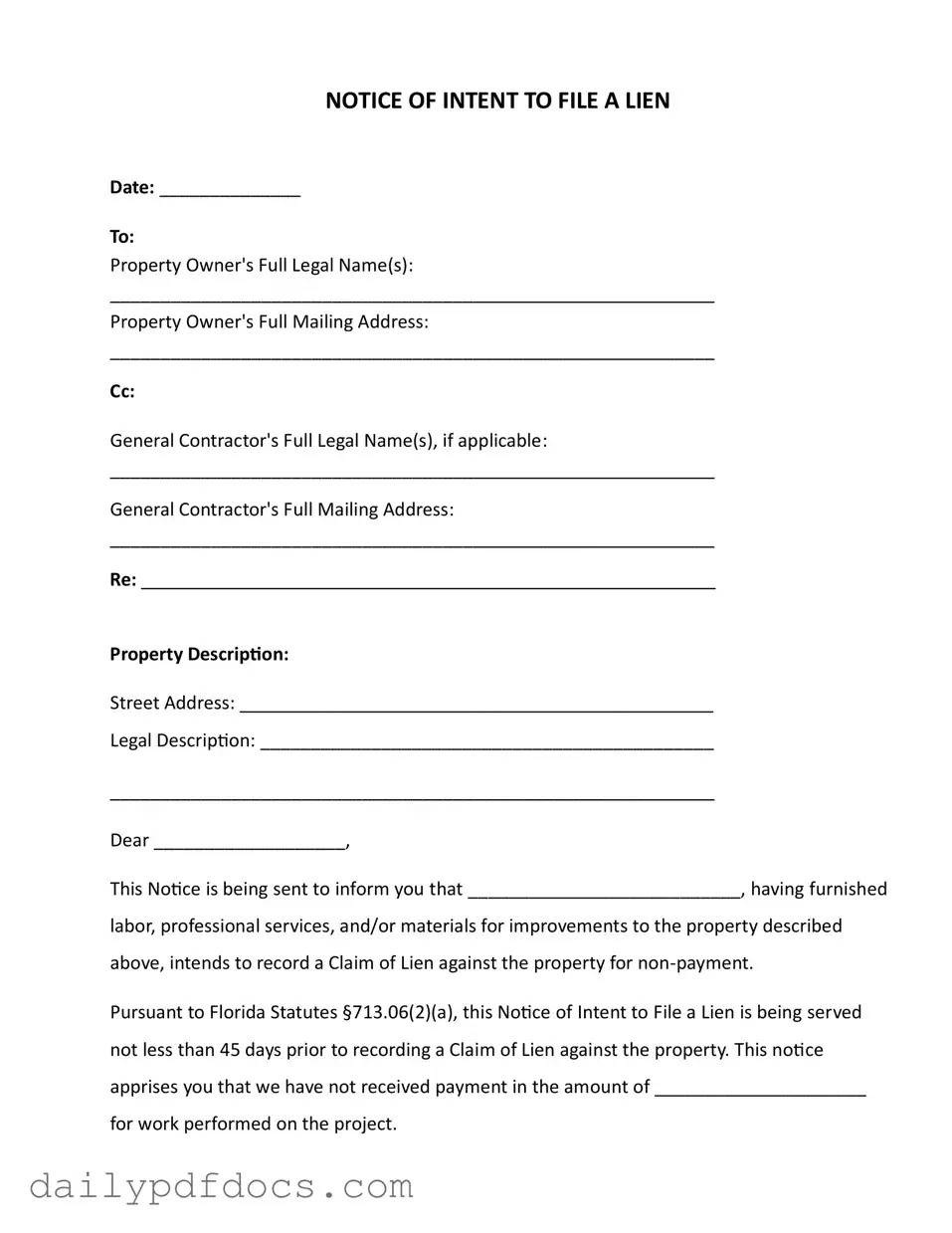What is the Intent to Lien Florida form?
The Intent to Lien Florida form is a legal document that notifies property owners of an intent to file a lien against their property due to non-payment for labor, materials, or services provided. It serves as a warning, allowing property owners the opportunity to address the outstanding payment before a lien is formally recorded.
Who needs to file an Intent to Lien?
How long before filing a lien must the Intent to Lien be served?
According to Florida law, the Intent to Lien must be served at least 45 days prior to recording a Claim of Lien. This timeframe allows property owners to respond and settle any outstanding payments before any legal actions are taken.
What happens if the property owner does not respond to the Intent to Lien?
If the property owner fails to respond or make payment within 30 days of receiving the Intent to Lien, the party who filed the notice may proceed to record a Claim of Lien against the property. This could lead to foreclosure proceedings and additional costs for the property owner.
What information is required on the Intent to Lien form?
The form requires several key pieces of information, including the date, the property owner's full legal name and mailing address, the general contractor's details (if applicable), a description of the property, and the amount owed. Clear and accurate information is crucial to ensure the notice is valid.
Can the Intent to Lien be sent via email?
No, the Intent to Lien must be served through traditional methods such as certified mail, registered mail, hand delivery, delivery by a process server, or publication. This ensures that there is a verifiable record of the notice being sent to the property owner.
What should a property owner do upon receiving an Intent to Lien?
Upon receiving an Intent to Lien, the property owner should review the document carefully. It is advisable to contact the sender promptly to discuss the payment issue. Addressing the matter quickly can help avoid further legal complications, including the recording of a lien.
What are the consequences of a recorded lien?
If a lien is recorded, it can significantly impact the property owner's ability to sell or refinance the property. Additionally, the owner may face foreclosure proceedings and could be liable for attorney fees and court costs associated with the lien process.
Is there a way to dispute an Intent to Lien?
Yes, property owners can dispute an Intent to Lien by contacting the filer to discuss the payment issue. If a resolution cannot be reached, legal advice may be necessary to explore options for contesting the lien or negotiating a settlement.
Can the Intent to Lien be withdrawn?
Yes, if the payment issue is resolved before the lien is recorded, the party who filed the Intent to Lien can withdraw it. This typically involves notifying the property owner in writing and ensuring that no lien is recorded against the property.

